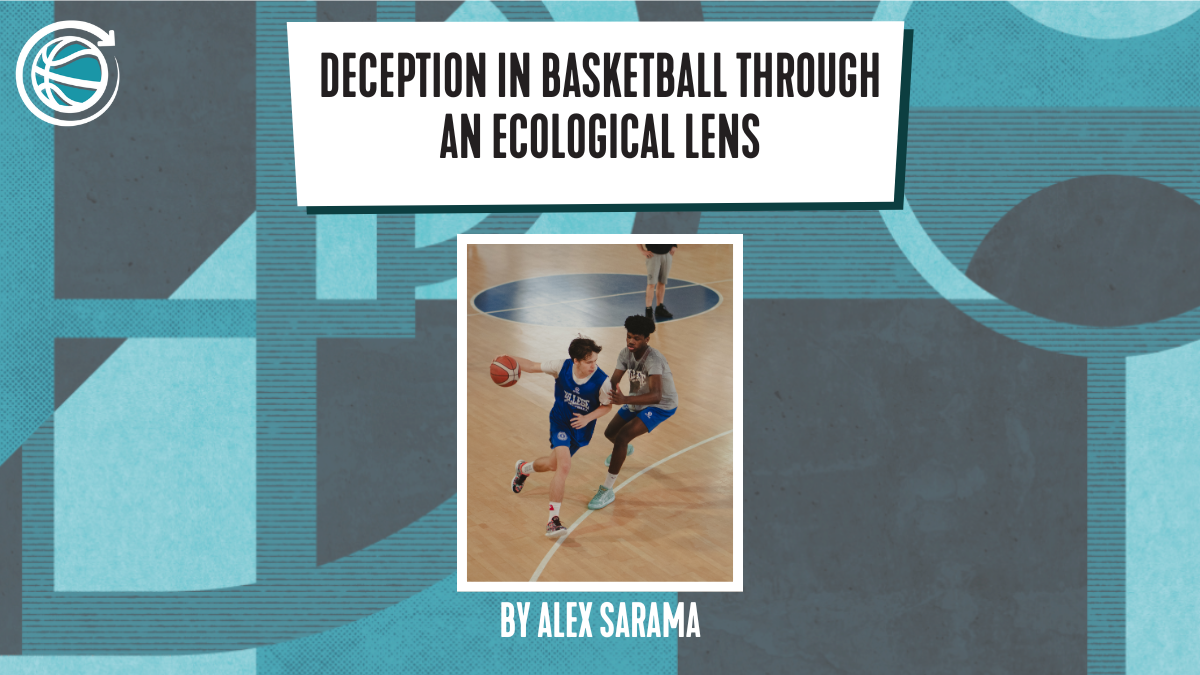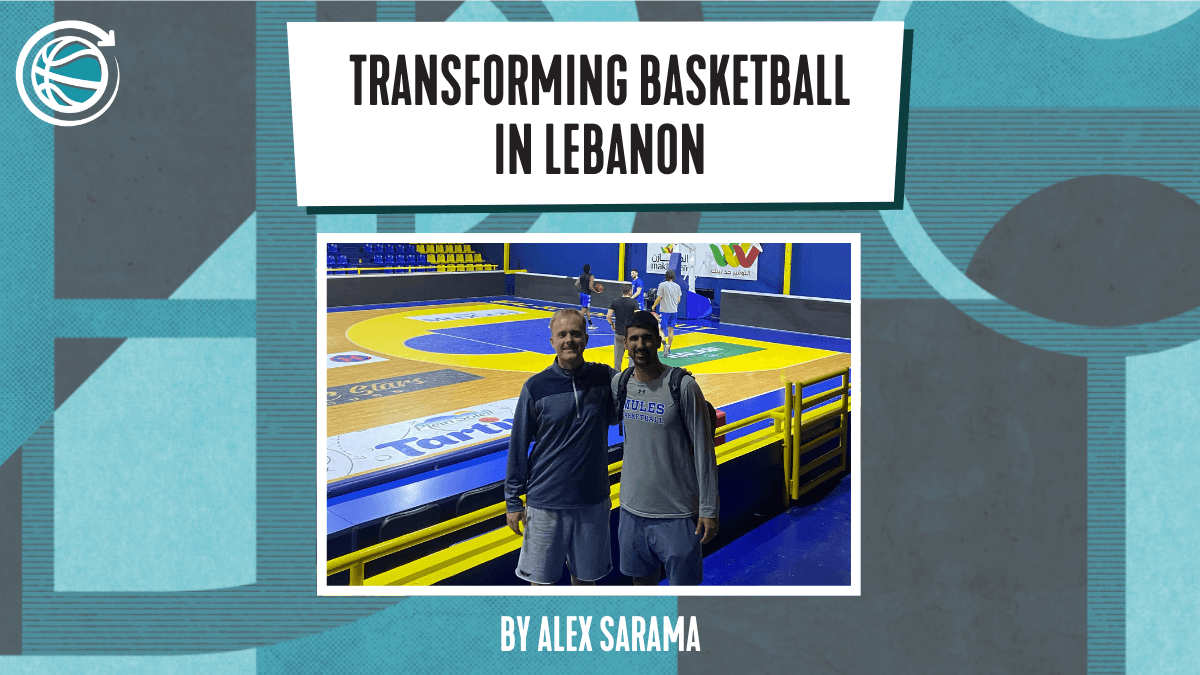Deception in Basketball Through an Ecological Lens


Let’s start by considering what deception even is? A 2022 paper by Ramsey et al., forms the basis of this blog article.
Within “Maximising Grip on Deception and Disguise: Expert Sports Performance During Competitive Interactions.”, Ramsey and colleagues highlighted how deception can be reframed through an ecological lens.
“Deception is signalling misinformation to your opponent to create an advantage… The act of deception can be understood as offering a misleading affordance that an opponent is invited to act on, imposing a significant challenge to an opponent’s ability to attain grip by manipulating the information available.” (Ramsey et al., 2022).
An affordance, as first outlined by JJ Gibson, is simply an opportunity for action. For instance, an offensive player dribbling up the court in transition may feint and turn their body to the left, as if they are acting upon the affordance to dribble past their defender. The defender may shift their body in response to this information, while the offensive player then acts upon the affordance to drive through the space now vacated by the defender.
Another simple example of this is a no-look pass. When completing a no-look pass, the offensive player is disguising their intent to act upon the affordance to pass to their desired teammate. This may deceive the defenders into thinking that they are passing to another teammate or completing another basketball action. This is the act of offering a misleading affordance.
This is an interesting subject area, as one of the biggest limitations of the traditional approach to coaching may be the extent to which it stifles the emergence of deceptive behaviours. It is effectively left up to chance that players will be able to re-discover how to be deceptive at a later date. Dribbling on-air, through cones or against passive defenders simply does not provide a useful backdrop for deceptive behaviours to emerge. Likewise, we cannot explicitly teach deception through on-air moves because of how contextual deception is based on the interaction with the player and their environment.
On the Phi-Lacrosee-ophy Podcast with Jamie Munro, Jamie recorded an entire episode about deception. He spoke about how deception is a great indicator of a player’s fluency. Building on Jamie’s point, deception is a great example of skilled intentionality: the ability of a player to be attuned to their affordance landscape (e.g. the difference opportunities for action that exist within every moment of a possession).
“Expert performers in fast-ball and combat sports continuously interact with their opponents and, if they are to be successful, adapt behaviour in order to gain an advantage. For example, disguise and deception are recognised as skilful behaviours that are employed to disrupt an opponent’s ability to successfully anticipate their actions.” (Ramsey et al., 2022).
In practical terms, it may be interesting for coaches to consider deception on an individual and team-wide basis. When viewing deceptive behaviours on an individual player to player basis, coaches may consider elements such as where a player is looking, what they are saying, their eyes, body positions, use of fakes, feints and changes of speed etc. This applies to both on the ball and off the ball actions. For instance, a ghost cut is a great example of an deceptive off-ball action when an offensive player perceives the affordance to exploit space existing behind the defense.
Another simple example of individual deception could be a player completing an extra pass while in dominoes to an open teammate, while facing away from the intended passing direction. By disguising the intention of the pass, the defense may not anticipate the extra pass and continue to close-out to the player in possession of the ball.
Viewing the same possession through the perspective of the defense, a deceptive defender may be attuned to the ways they could offer a misleading affordance to the offense. They may “re-route” the close-out by lunging at the player in-possession of the ball, making the extra pass appear like an obvious affordance, before suddenly changing speed to recover to the off-ball player in an attempt to get in-between the passing line and pick off the pass.
Coaches now may be wondering about how these behaviours could emerge within their players. What we want to avoid is “teaching” these specific solutions. Rather, we can create environments where these solutions could emerge, along with many other creative movements that we may not have even considered. For instance, a 2-on-1 shooting game where the offense can only pass or shoot, with the defense getting three points for a deflection, will naturally focus the intention of the defense on ways to be deceptive, as well as for the offense to explore passing solutions that feature a lower risk of interception. Critically, we may see many other deceptive sequences emerge within this activity.
On a team level, deception extends to team offense and defense. This may be one of the biggest areas of improvement for coaches to address. With the traditional approach, players are taught the right technique, exact tactics, and specific automatics such as “if they go here, you must do this”. The problem is that this is the antithesis of deception!
Coaches frequently get frustrated when players cannot exhibit creative behaviours in the game, but this is because of limitations in the system and the coaching strategies used. Classical teams are the easiest to play against for an attuned and creative defense. Using highly predictable patterns such as monotonous set plays without coherent coverage solutions does not allow for deception to emerge. Smart defensive players may be able to anticipate patterns, finding it easy to neutralise them as soon as they see the base sequence repeated over and over.
Another example that is counter-intuitive to facilitating deception is when coaches want players to always repeat one solution. For instance, the coaches who adopt attitudes that are far past their sell-by date: e.g. “you must always finish off two feet or pass with two hands.” The question in such instances is why would you want to negatively constrain the emergence of skilful behaviour, especially when the environment may sometimes mean these solutions are the most optimal for what the players encounter?
Here are four practical ideas for facilitating deception within team offense:
- Encourage trigger diversity. Run triggers in different locations on the floor with varied triggers (unless preying on one team’s coverage or personnel). The Transforming game “Battleship” is a great activity for helping with this.
- Encourage players to explore different affordances out of the same triggers. For example when running a get, there are a plethora of different coverage solutions that could be feasible based on the interaction of constraints.
- Be unpredictable, but within the scope of a team’s principles of play. For instance, in pick and roll, a team may emphasise a variety of coverage solutions such as slips, ghost screens, rejects, veers etc., as opposed to always looking to do the same thing.
- When running sets, ensure players run the triggers within the sets to “shatter the ice” (Zico Coronel on the Transforming Basketball Podcast) vs running sets to run the set and merely get from A to B.
Ramsey, H., Dicks, M., Hope, L., & Reddy, V. (2022). Maximising Grip on Deception and Disguise: Expert Sports Performance During Competitive Interactions. Sports medicine – open, 8(1), 47. https://doi.org/10.1186/s40798-022-00441-y
The easiest way to facilitate deception is creating representative practice environments!
























